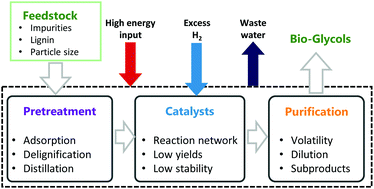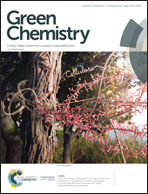A roadmap for renewable C2–C3 glycols production: a process engineering approach
Abstract
The development of the bioeconomy has stimulated the search for fuels and chemicals that can be obtained through economically competitive renewable routes, aiming to reduce the environmental impact of their usual petrochemical production. C2 and C3 glycols are chemicals with a wide range of applications and high market volume, and the possibility of replacing their petrochemical production by their renewable equivalents through either chemical or biochemical conversion strategies has been the object of academic and industrial developments. Most studies focus on lab-scale experiments for catalyst development to tackle the challenge of achieving high selectivity from complex renewable feedstocks. However, little effort has been dedicated to assess the performance and commercial feasibility of the routes under development and how they compare to those already at the industrial scale. In this context, the intention here is to provide an overview of the renewable routes to produce ethylene glycol, 1,2-propanediol, and 1,3-propanediol, exploring the different feedstocks, conversion and purification strategies, and stages of technological maturity. More than summarizing the recent developments in the area, this review also discusses the expected challenges associated with the scale-up of such processing routes and their implications on process design and commercial production.



 Please wait while we load your content...
Please wait while we load your content...